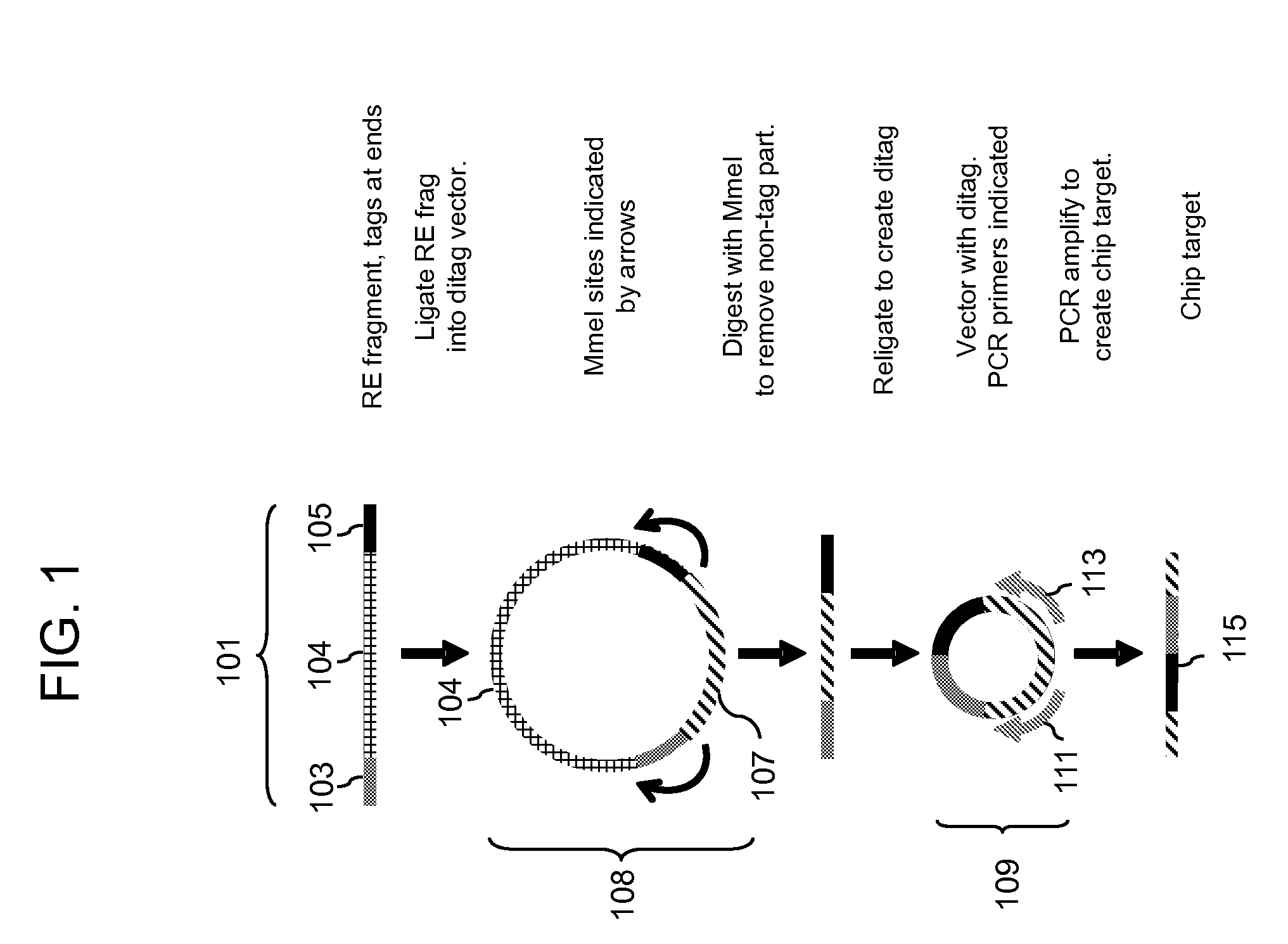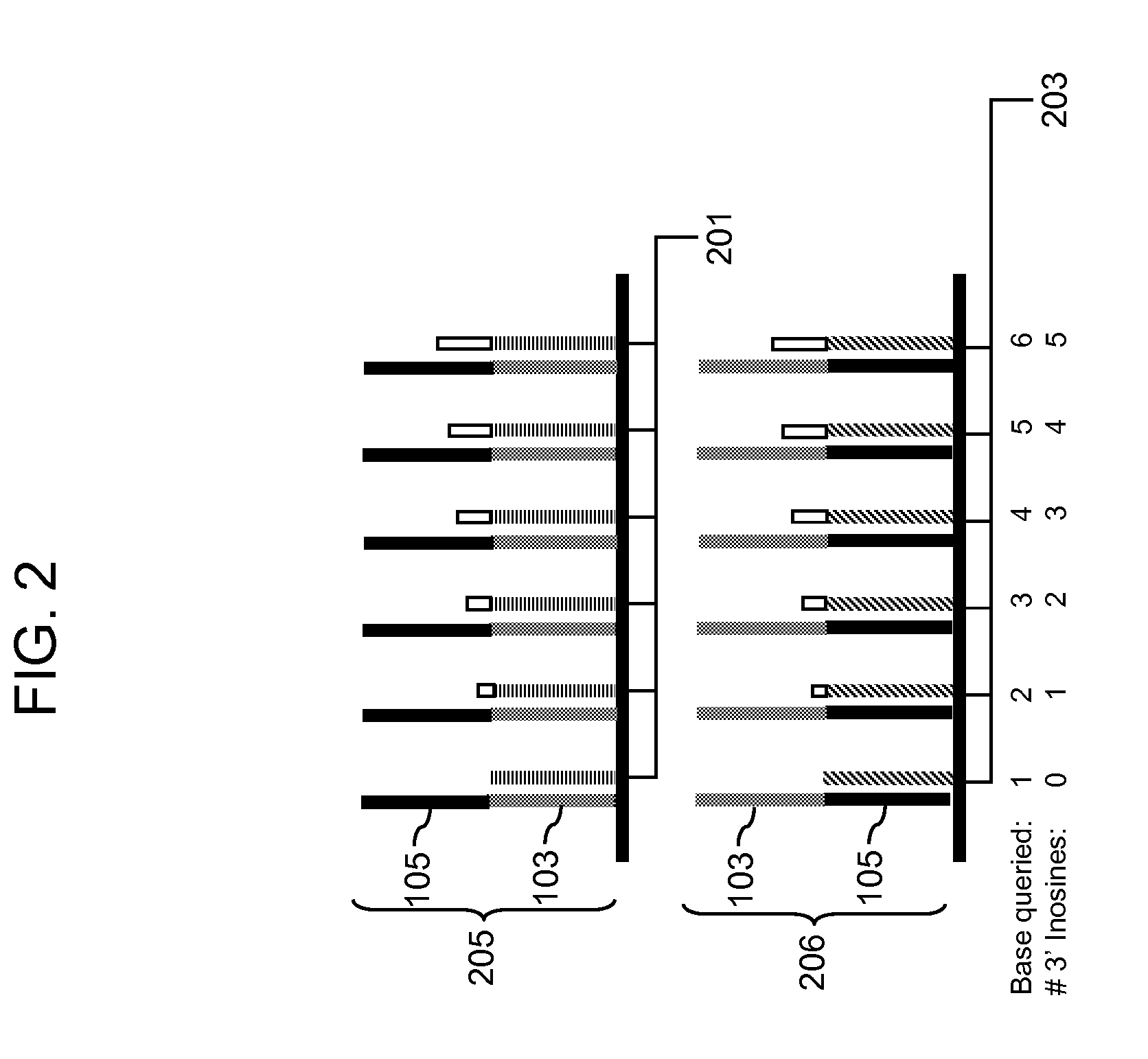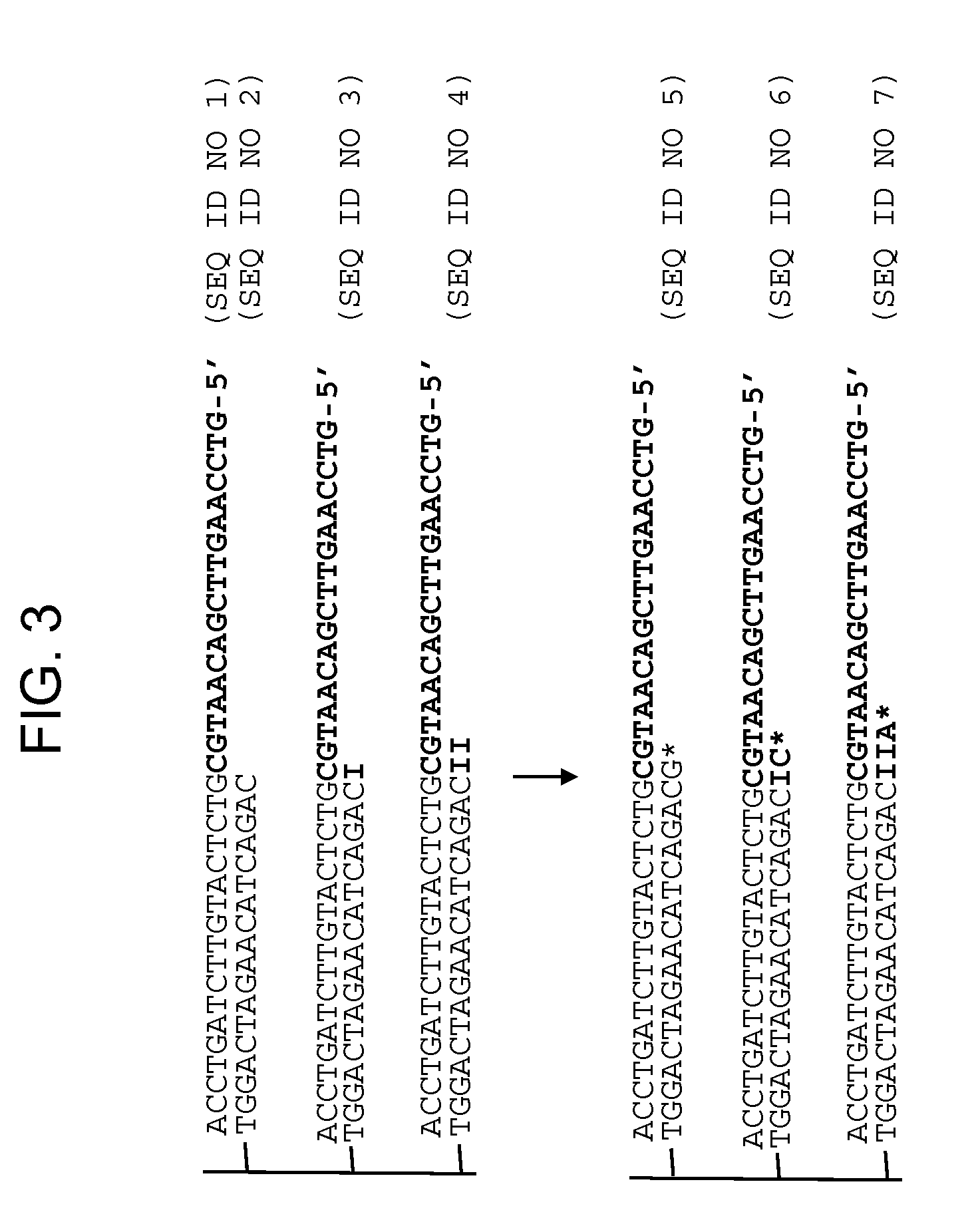Array-based translocation and rearrangement assays
a technology of chromosomal rearrangement and array, applied in the field of chromosomal rearrangement and translocation detection, can solve the problems of structural abnormalities, extra or missing genes or portions,
- Summary
- Abstract
- Description
- Claims
- Application Information
AI Technical Summary
Problems solved by technology
Method used
Image
Examples
Embodiment Construction
a) General
[0016]The present invention has many preferred embodiments and relies on many patents, applications and other references for details known to those of the art. Therefore, when a patent, application, or other reference is cited or repeated below, it should be understood that it is incorporated by reference in its entirety for all purposes as well as for the proposition that is recited.
[0017]As used in this application, the singular form “a,”“an,” and “the” include plural references unless the context clearly dictates otherwise. For example, the term “an agent” includes a plurality of agents, including mixtures thereof.
[0018]An individual is not limited to a human being but may also be other organisms including but not limited to mammals, plants, bacteria, or cells derived from any of the above.
[0019]Throughout this disclosure, various aspects of this invention can be presented in a range format. It should be understood that the description in range format is merely for conv...
PUM
| Property | Measurement | Unit |
|---|---|---|
| molar concentration | aaaaa | aaaaa |
| molar concentrations | aaaaa | aaaaa |
| length | aaaaa | aaaaa |
Abstract
Description
Claims
Application Information
 Login to View More
Login to View More - R&D
- Intellectual Property
- Life Sciences
- Materials
- Tech Scout
- Unparalleled Data Quality
- Higher Quality Content
- 60% Fewer Hallucinations
Browse by: Latest US Patents, China's latest patents, Technical Efficacy Thesaurus, Application Domain, Technology Topic, Popular Technical Reports.
© 2025 PatSnap. All rights reserved.Legal|Privacy policy|Modern Slavery Act Transparency Statement|Sitemap|About US| Contact US: help@patsnap.com



